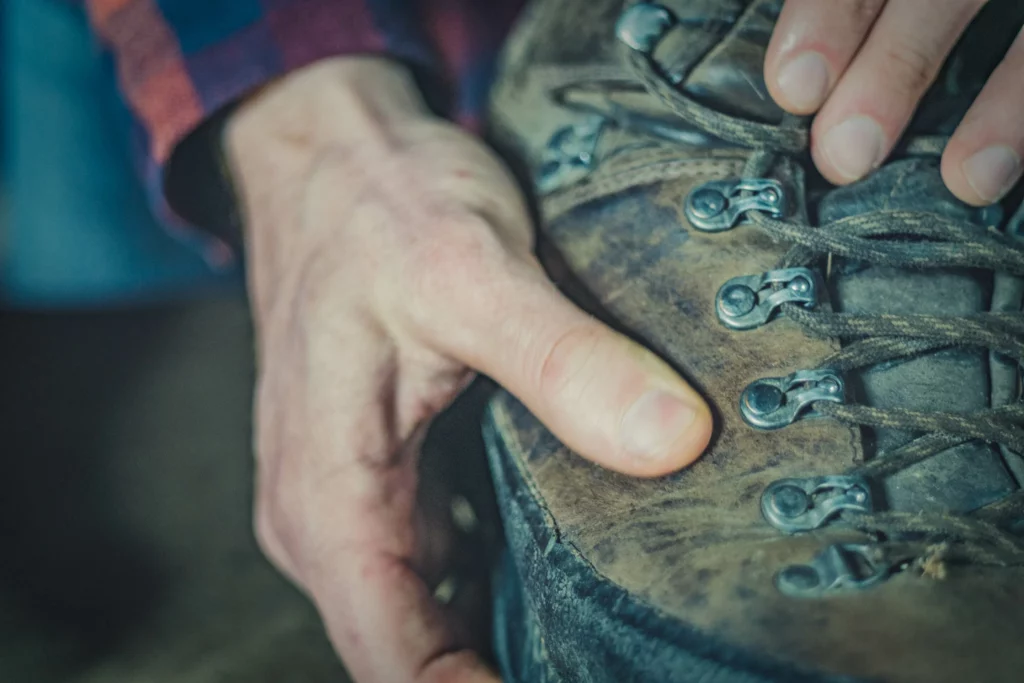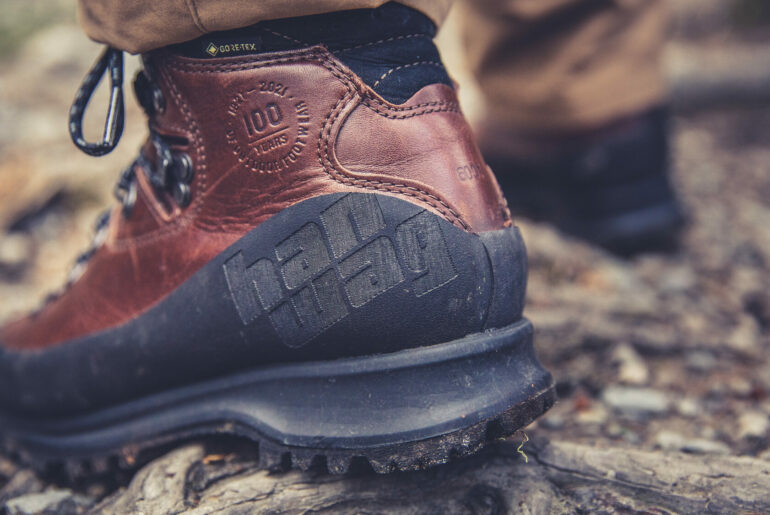Maintaining your hiking boots might not seem appealing, but it’s crucial for their longevity and performance. Regular cleaning and conditioning can keep your boots in top shape, saving you money and helping the environment. Here’s our comprehensive guide on how to care for your hiking boots.
SNEAK PEEK – THE 5 KEY TIPS
- Cleaning the outside
- Cleaning the inside
- Proper drying
- Applying waterproofing treatment
- Caring for leather boots: waxing and treating synthetic uppers
1. Cleaning the Outside of your Hiking Boots
First, remove the laces and footbeds to access all areas of the boots. Use a shoe brush to gently remove dust and dirt. For stubborn dirt, brush the boots under warm running water. Avoid using soap, as it can damage the leather and waterproofing. Never put your hiking boots in the washing machine.
Pro Tip: For extremely dirty boots, consider using a special leather cleaner, but only if necessary.
2. Cleaning the Inside of your Hiking Boots
Dirt and debris can also accumulate inside your boots, especially in bad weather. Remove the footbeds and shake them out. Clean the inside of the boots with lukewarm water and a sponge. Avoid using a brush as it can damage the inner lining. Fabric footbeds can be washed at 30°C, preferably by hand. For leather footbeds, use a damp sponge.
Pro Tip: Use a shoe hygiene spray if your boots still smell after cleaning.
3. Drying Your Boots Properly
After cleaning, it’s essential to dry your boots thoroughly. Place them in a well-aired, shady spot with the tongues wide open. Avoid direct sunlight and heat sources like radiators or fires, as they can damage the leather. Stuff the boots with kitchen roll (not newspaper) to speed up the drying process, changing the paper regularly.
4. Applying Waterproofing Treatment

Regular re-waterproofing is essential, especially after cleaning or exposure to wet conditions. This prevents a film of water from forming on the boots, which can reduce breathability. Use a Hanwag Waterproofing Spray according to the manufacturer’s instructions. Spray from a distance of about 30 cm and ensure even coverage, including hard-to-reach areas around the tongue. Allow 24 hours for the treatment to set.
Pro Tip: This applies to both leather and Gore-Tex boots. Fabric inserts also benefit from waterproofing to maintain breathability.

5. How to Care for Leather Boots: Waxing
Leather boots require regular waxing to stay supple and prevent cracking. Apply Hanwag Shoe Wax after every two to three trips, or immediately after a rainy hike. Use a high-quality shoe wax, applying it sparingly with a soft cloth or brush. Focus on hard-to-reach areas and metal parts like lacing hooks to prevent rust.

Pro Tip: Avoid using grease or oil as they can block pores and reduce breathability.
Treating Synthetic Uppers
Synthetic uppers should be washed carefully and treated with a waterproofing spray once dry. This maintains breathability and prevents dirt buildup.
Storing Your Hiking Boots
Proper storage is key to prolonging the life of your boots. Store them in a dry, well-aired place, away from direct heat sources. Use a wooden shoe tree to maintain their shape and consider a protective boot bag to keep them dust-free.
How to clean your Hiking Boots Conclusion
By following these steps, you can ensure that your hiking boots remain in excellent condition, ready for many more adventures. At Crib Goch Outdoor, we’re committed to providing quality outdoor gear and expert advice to help you make the most of your time in nature.
For more tips and expert advice like Comprehensive How to Reproof Your Jacket: The Best Step-by-Step Guide, subscribe to our newsletter and join our outdoor community. Happy hiking!







